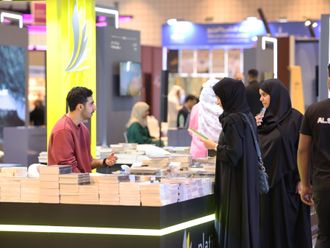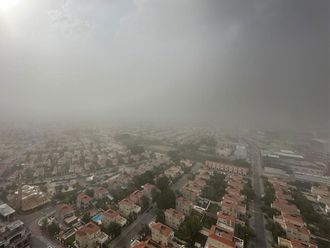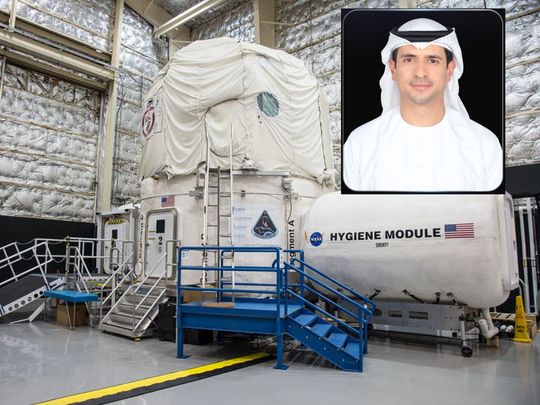
Dubai: An Emirati pilot, who is the world’s youngest and eighth graduate to attain a doctorate in aviation, was on Monday named as the first UAE crew member for NASA’s simulated Mars journey for 45 days.
The Mohammed Bin Rashid Space Centre (MBRSC) announced the selection of Shareef Al Romaithi for the second analog study of the UAE Analog Programme, as part of NASA’s Human Exploration Research Analog (HERA) Campaign 7 Mission 2.
Who is Shareef Al Romaithi?
Al Romaithi is a pilot with more than 16 years of experience in the airline industry, including more than 9,000 flight hours on multiple Airbus and Boeing aircraft.
Prior to being selected for the UAE Analog Programme, he commanded Boeing 777 and 787 aircrafts as a captain, underscoring his expertise and leadership in aviation.
Al Romaithi has a bachelor’s degree in aerospace engineering and three master’s degrees from the Embry-Riddle Aeronautical University, focusing on aerospace and aviation management, safety systems, and space operations, respectively.
He further earned a doctorate degree in aviation from the same university, specialising in safety systems and human factors.
He is also the world’s youngest and eighth graduate to attain a doctorate in aviation. Hailing from Abu Dhabi, he joins HERA through a partnership between NASA and MBRSC.
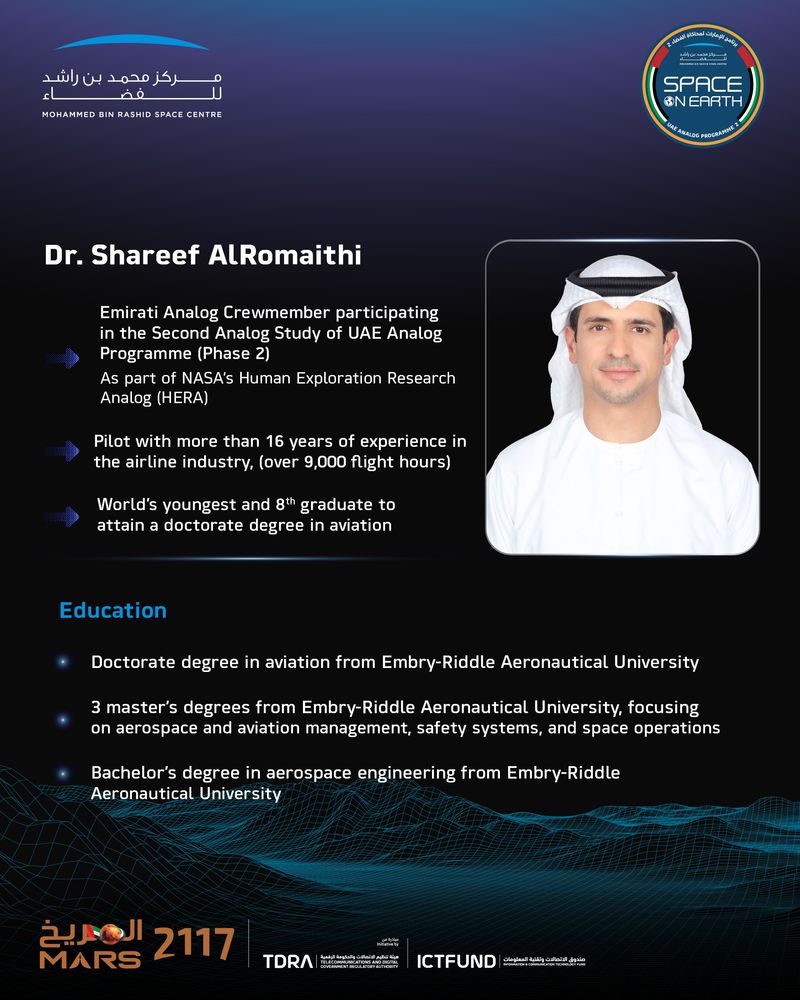
4 Primary Crew
The second of the four-phase analog study on Earth will begin on May 10, with Al Romaithi joining the primary crew alongside Jason Lee, Stephanie Navarro, and Piyumi Wijesekara as they step into the HERA habitat at NASA’s Johnson Space Centre in Houston, Texas, USA.
Once inside, the team will live and work within the facility for 45 days, before exiting on June 24.
How they will live
HERA is a unique three-story habitat that replicates space-like conditions on Earth.
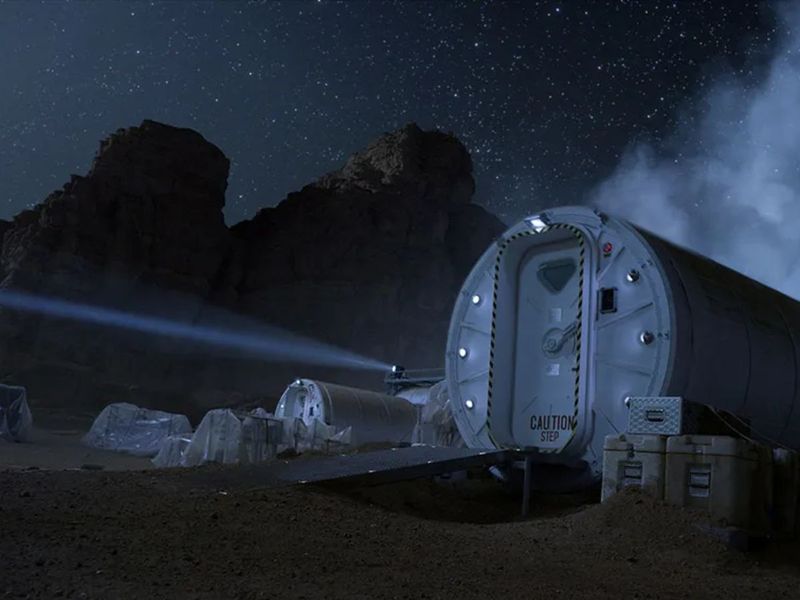
It is designed to help scientists study how crew members adapt to isolation, confinement, and remote conditions before they embark on deep space missions to the Moon, Mars, and beyond.
Crew members will carry out scientific research and operational tasks throughout their simulated mission to the Red Planet, including a “walk” on Mars’ surface using virtual reality.
They will also experience increasing communication delays lasting up to five minutes each way with the Mission Control Centre as they “near” Mars.
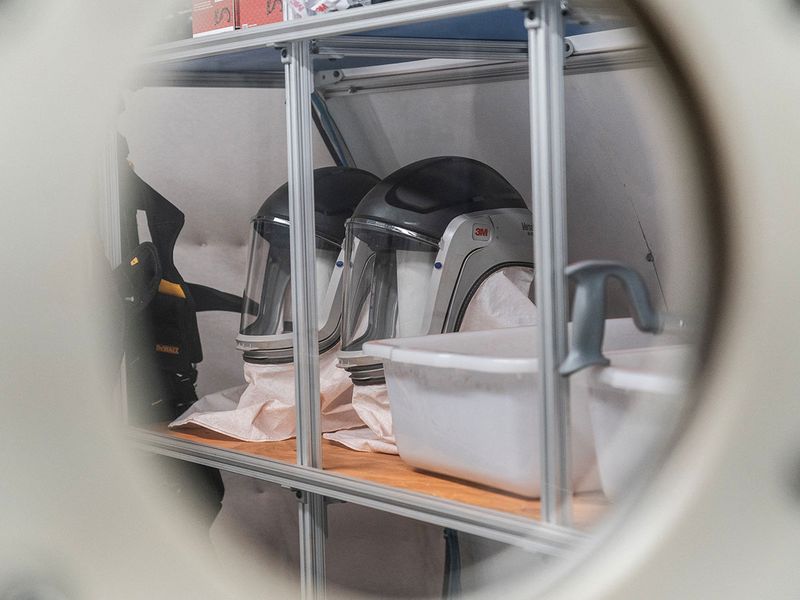
Scientific experiments
The UAE stands as a key participant among a select group of countries conducting groundbreaking scientific research aimed towards future lunar and Martian exploration missions, MBRSC said.
The analog study, comprising four phases, includes 18 human health studies being conducted here on Earth, designed to understand the physiological, behavioural, and psychological responses of crew members in conditions akin to those they would encounter on long duration space missions.
Significantly contributing to this international effort, the United Arab Emirates University (UAEU), Mohammed Bin Rashid University of Medicine and Health Sciences (MBRU), and American University of Sharjah (AUS) are leading six critical studies, in collaboration with MBRSC, highlighting the UAE's pivotal role in advancing human space exploration.
Pushing boundaries
Salem Humaid AlMarri, Director General, MBRSC said, “We are pleased to announce the selection of Shareef Al Romaithi for the second analog study of the UAE Analog Programme at the HERA habitat, marking another significant step towards the UAE's vision for space exploration.
“This mission, blending scientific research and international collaboration with NASA, is poised to deepen our understanding of the physiological and psychological challenges of long-duration space travel through experiments here on Earth.
“The insights gained from these Earth-based simulations will be instrumental in preparing humanity for the next giant leap – setting foot on Mars and beyond. The UAE is honoured to be part of this journey, and we will continue to push the boundaries of what is possible and inspire future generations to be part of the space sector.”
Al Romaithi is part of the second group of volunteers to participate in an analog study in HERA this year.
The first phase of the second analog study of the UAE Analog Programme was completed on March 11, 2024. The third and fourth phases will begin on August 9 2024 and November 1, 2024, respectively.



